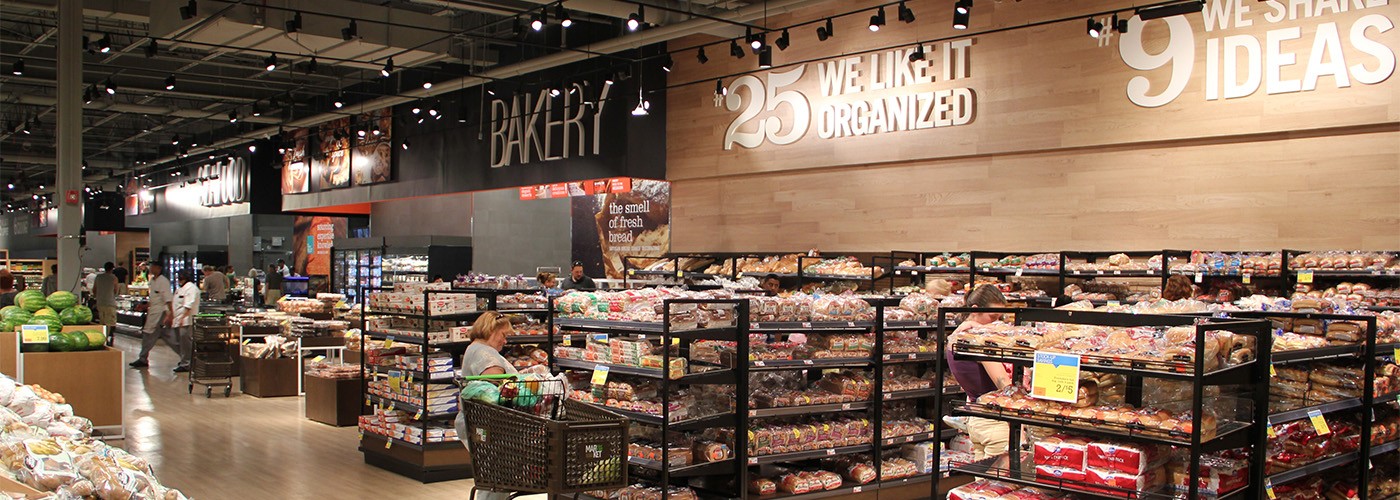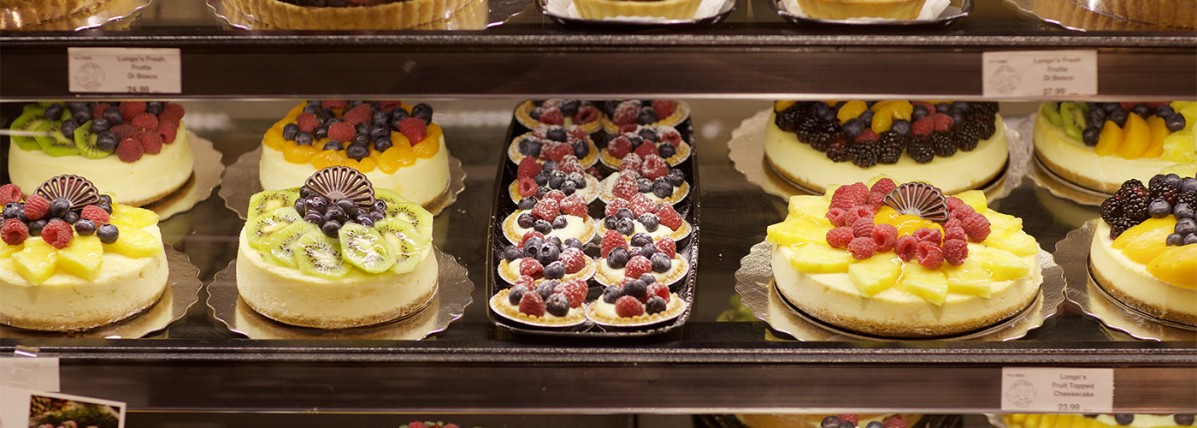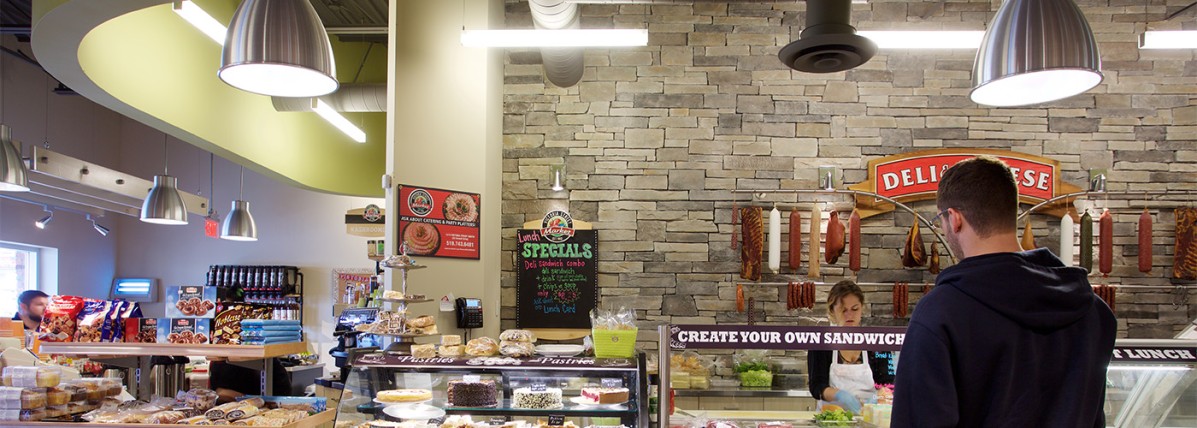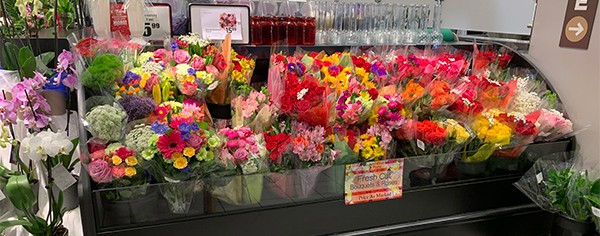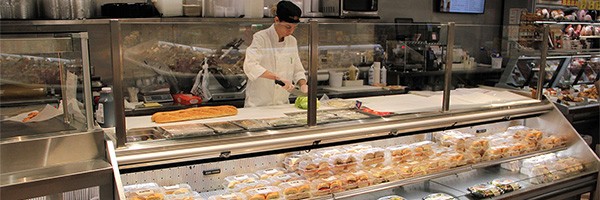A lot of thought goes into designing a grocery store long before the products are placed on the shelves, such as the store’s layout and the kind of products you’ll carry.
You also need to think about how your products will be displayed and how that affects your customer’s shopping experience. One of the factors to consider is lighting, and how the color and temperature of the lights in your store contribute to the overall atmosphere, directly affecting the appearance of products on display — causing people to buy or walk away, based on the choices you’ve made.
Types of lighting used in grocery stores
Grocery stores use three basic lighting types when lighting their stores:
- Ambient lighting creates overall illumination throughout the store, providing a comfortable and welcoming atmosphere.
- Accent lighting is used to highlight specific areas or products in the store, such as fresh produce or bakery items.
- Task lighting is used to illuminate specific tasks, such as reading labels or using a self-checkout kiosk. While all three add to your customer’s experience, accent lighting has the biggest impact on buyer behavior.
The importance of accent lighting
No stage presentation is complete without lighting. When you think of grocery products as theater, you’ll understand just how important lighting can be.
The lights you use should be tailored to show off the strengths of the product it’s meant to illuminate and make it irresistible to shoppers. The wrong light can make certain foods look unappetizing. Cast a cool, bluish light over baked goods and you’ll see what I mean.
The lights we incorporate in our displays accentuate the specific product they’re designed for. Meat & Deli displays benefit from lights with a reddish tinge, Produce shines in natural light and a warm, yellow light brings out the golden brown tones of baked goods.
When placing accent lighting, it is important to consider the overall lighting scheme of the store and ensure that the lighting is consistent and complementary. The lighting should also be positioned to avoid glare or shadows that may detract from the appearance of the products.
How displays affect consumer behavior
Lighting plays a major role in how a product looks in a store, but there are other factors that influence customers to buy, such as how it’s displayed.
Occasionally, customers will object because our focus is on the display. They’ll say things like “I’m not selling your fixtures or displays. I want to sell my products.” While that is true, we know presentation and making the product look good is what sells — and that’s why we’re always looking for new and innovative ways to display products. Our focus is not to detract but enhance or complement the product featured on the displays we make.
The current trend is to have less on display to reduce spoilage and shrink, especially in the produce and baked goods departments. However, it’s important to right-size displays for the merchandise you’re promoting. Here’s a good example:
Imagine walking into a grocery store, heading to the produce section and, instead of finding bins full of fresh fruits and vegetables, what you see are near-empty displays.
The grocer may have decided the best way to maintain freshness and reduce shrink is to display a limited amount of produce at one time. Customers, however, might think “the produce looks picked over…is this all that’s left?”. In the customer’s mind the produce that is on display appears less fresh than it actually is.
This, of course, has a negative effect on sales and does nothing to create loyalty. While customers may purchase something simply because they’re already there, it’s more than likely they’ll choose a different store next time they shop.
Less can be more by providing turnover of the product to maintain freshness, so long as the displays you use are flexible and still give the impression of being full and abundant.
Being able to easily scale back on the size of your display also opens up the floor space, making it feel more spacious and easier for customers to navigate.
A word about cleanliness
Another aspect to food presentation is cleanliness. You’ll have fewer issues with staff cutting corners if the equipment and cases you use are easy to clean and maintain so they look good and don’t break down.
Broken or degraded equipment held together with duct tape reflects negatively on the product that’s being displayed. It sends the message that you don’t care about your equipment, so how can you expect people to trust that you take care when handling the products?
Similarly, if your display is dirty or cluttered, customers question the cleanliness and quality of the products being sold.
That’s why we make sure all of our displays are flexible and easy to care for. Some cases, like our Fresh Go bins, even have clip on panels that are easily replaced should they get damaged. . .
Make sure your products are in the right “shopping zone”
As grocers, you already know the value of product placement in a store. A complex system governs the placement of most products, with suppliers paying big bucks to store owners to ensure their brand is prominently displayed.
Care should also be taken to make sure the displays that support the products are appropriate too.
You need to ensure that shelves and display cases are not too high or deep for customers to access. This is especially important in departments that depend on close interactions between staff and customers, like bakery, meat and deli.
The closer the interaction is, the more positive the experience will be, assuming your staff is trained to provide good customer service. And that helps create loyal shoppers.
This kind of thinking impacts the way we design all of our displays, and how our displays affect the customer’s perception of the goods they’re being offered is always top of mind.
If you’d like some more in-depth information on how to use lights effectively or ideas on how to enhance your customer’s experience so they become loyal shoppers, get in touch. We’ll offer you insightful, cost-effective recommendations tailored to your unique needs.
